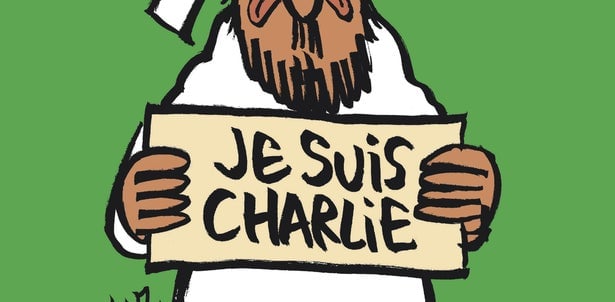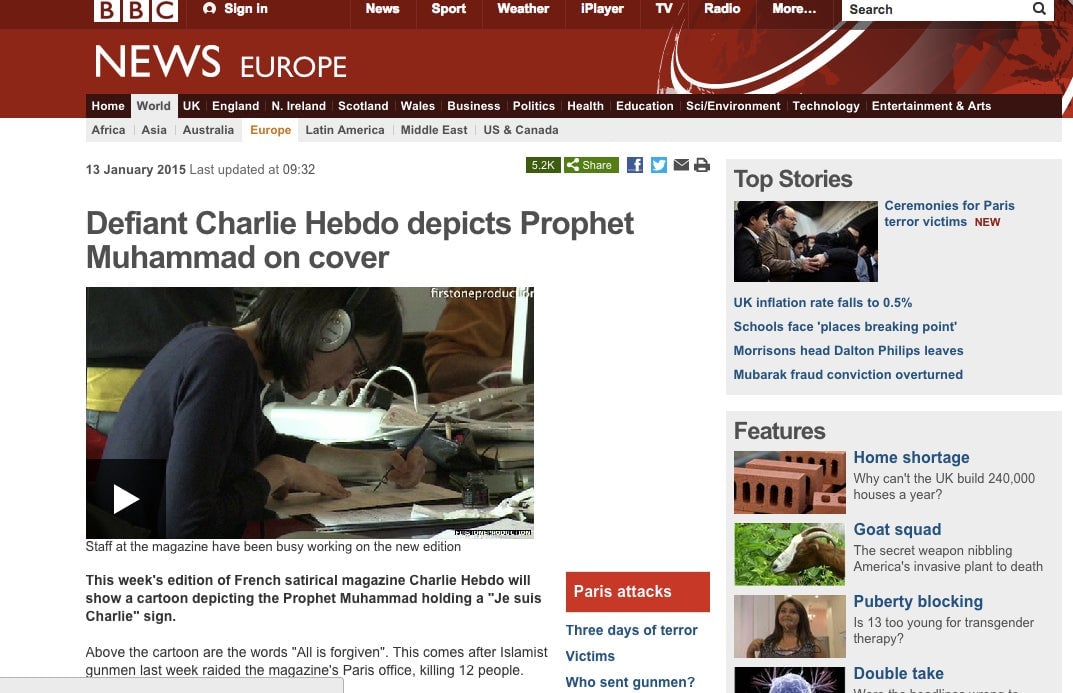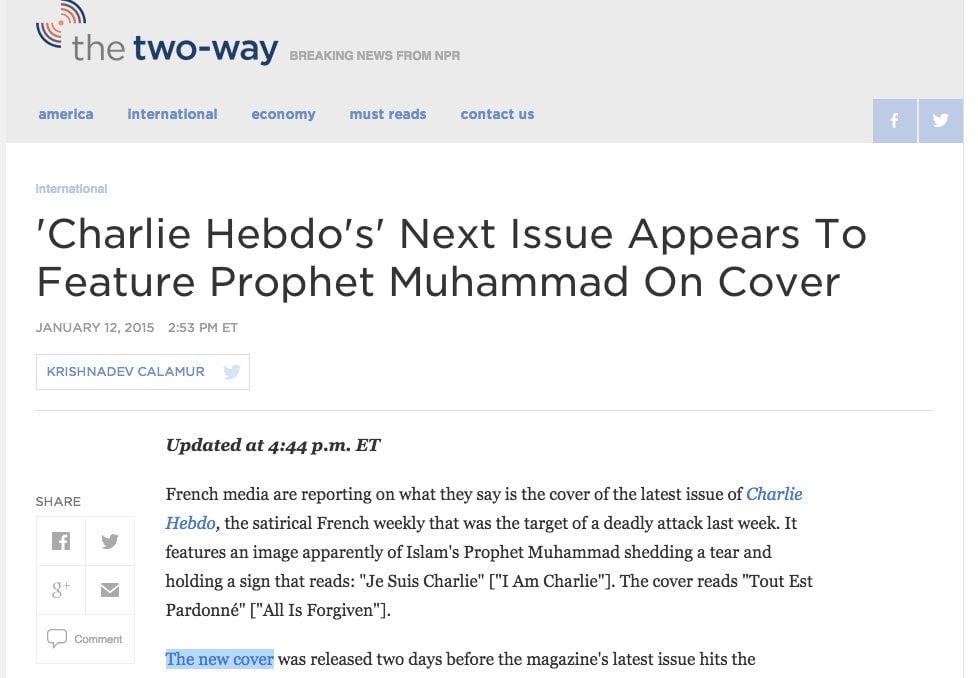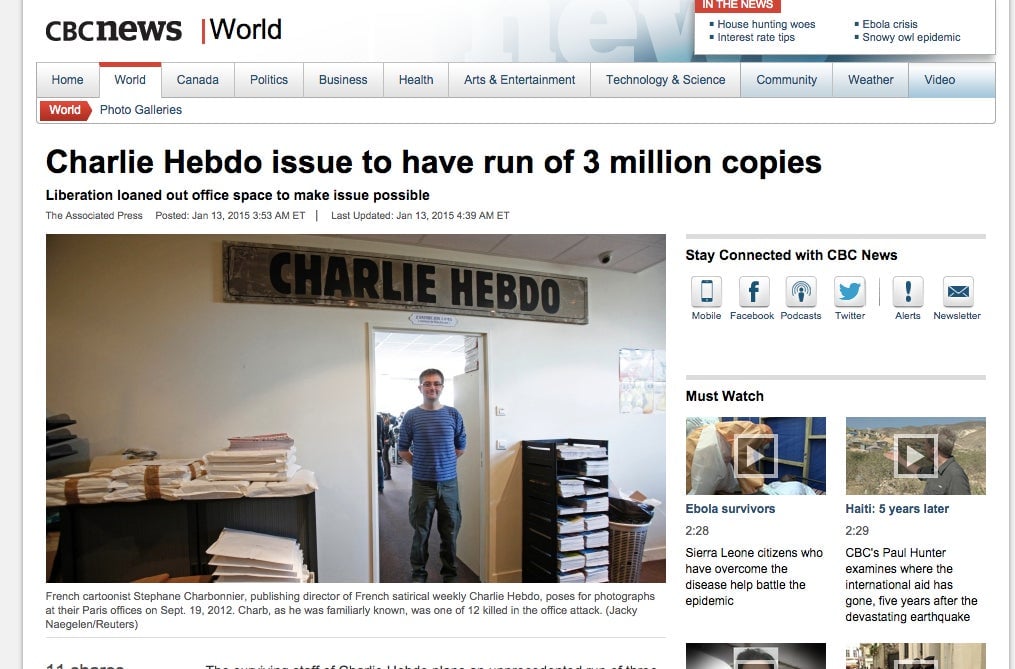Public broadcasters around the world are not publishing the new Charlie Hebdo cover
The new cover of Charlie Hebdo manages to be both poignant and blasphemous. Under the banner “All is forgiven,” it depicts the Prophet Mohammed holding the words “I am Charlie.” The cartoon will feature on the cover of this week’s issue, with a print run of three million, the first since the massacre at its offices last week.


The new cover of Charlie Hebdo manages to be both poignant and blasphemous. Under the banner “All is forgiven,” it depicts the Prophet Mohammed holding the words “I am Charlie.” The cartoon will feature on the cover of this week’s issue, with a print run of three million, the first since the massacre at its offices last week.
But many people won’t see the cover in the stories about Charlie Hebdo today. The biggest public-service broadcasters in the English-speaking world are choosing not to show the cover.
The British Broadcasting Corporation—funded by annual license-fee payment that is owed by every single person in the UK owning a TV—was leading its website with the story but choosing not to show the image:

(Update: The BBC appears to be running a small image lower down in a separate story—a picture of France’s Liberation newspaper—but not its own story on the new Charlie Hebdo cover.)
NPR—the US non-profit radio network that receives a government endowment worth hundreds of millions—also decided not to show the cover:

The Canadian Broadcasting Corporation—state-backed but editorially independent—also chose not to show the cover:

The Australian Broadcasting Corporation did show the cover. It had a story saying that most Charlie Hebdo cartoons would be banned under Australia’s racial hatred laws.
Some privately owned media also decided to not show the new cover, most notably the New York Times. But they were far outnumbered by all those that decided to do so—including the Wall Street Journal, the Daily Mail, USA Today, Buzzfeed, and many more.
Public-service broadcasters are not the gatekeepers to information on the web they once were—anyone with an internet connection can easily search for the image of the cover. And there is an argument to made that supporting free speech doesn’t force an obligation by other media outlets to print offensive content. But it is telling that the millions of readers in countries where free speech is considered so important that it is backed by the state haven’t been given the chance to see a powerful example of it in action.
Correction: We originally said that the Australian Broadcasting Corporation did not feature the new Charlie Hebdo cover. As pointed out to us, it did do so and we have amended the story.